Free coneflowers? Yes, please.
You want more coneflowers. We do too! Maybe you planted one last year, and now you’re thinking of a larger patch. Or you want to try some new colors out there but aren’t sure about starting them from seed.
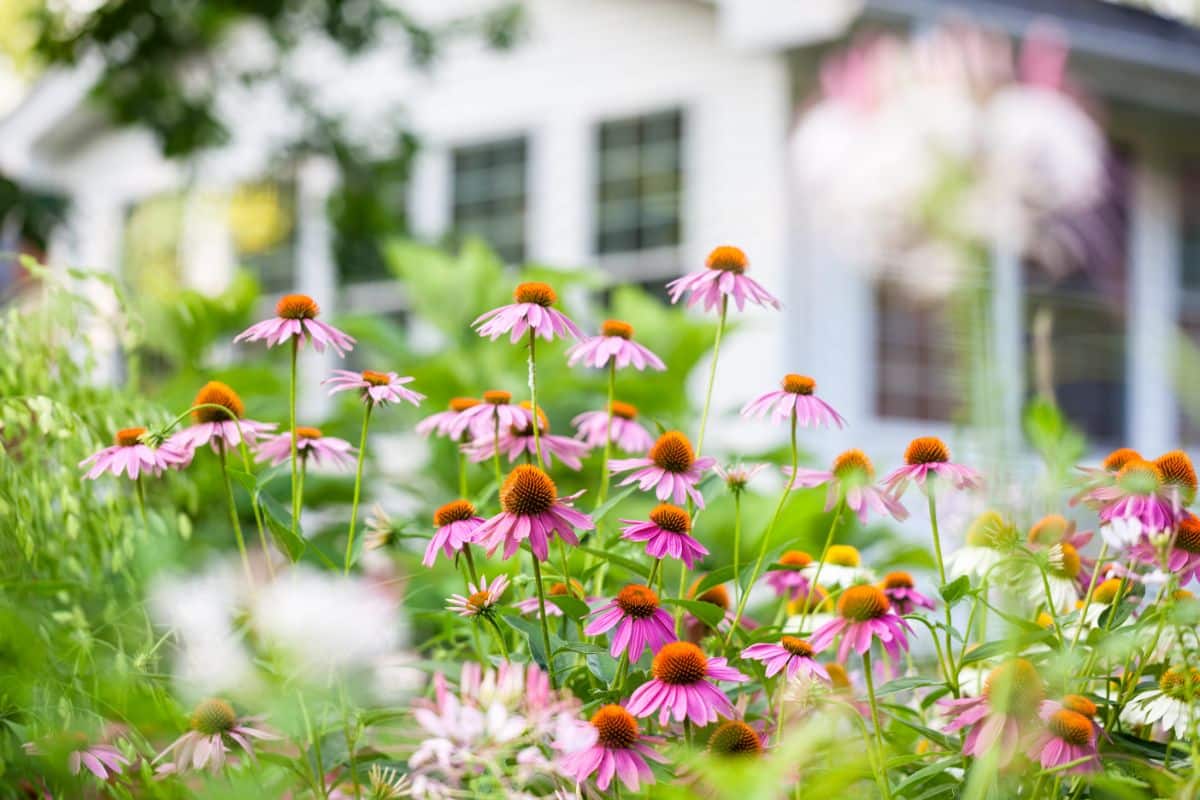
Are all purple coneflowers purple? Nope.
Can I grow them in a pot? Yup.
Let’s dive in.
Tall and wavy in the summer breeze, purple coneflowers reach as high as five feet tall with prolific large daisy-like blooms on long stems. A native of eastern North America, this easy-to-grow flower is a staple for perennial gardens and flower beds.
Purple coneflower is a must-have in a perennial garden. It provides high-quality pollinator forage and dependable blooms from mid-summer until frost. Bees, moths, butterflies, and hummingbirds will all be attracted to your garden by a patch of coneflowers.
Coneflowers have a long vase life and are excellent for cut flowers and dried arrangements. Many people use different parts of the plant for culinary or medicinal purposes.
Jump to:
- With coneflowers, go big.
- A coneflower by any other name…
- 3 Ways to Propagate Echinacea
- How To Propagate Coneflowers with Root Cuttings
- How To Grow Echinacea From Seeds
- How to Propagate Purple Coneflower Plants by Division
- Tips For Growing Echinacea
- Soil, Sunlight, and Fertilizer Needs of Echinacea
- Growing Echinacea in Containers
- Avoid These Common Mistakes When Growing Coneflowers In Containers.
With coneflowers, go big.
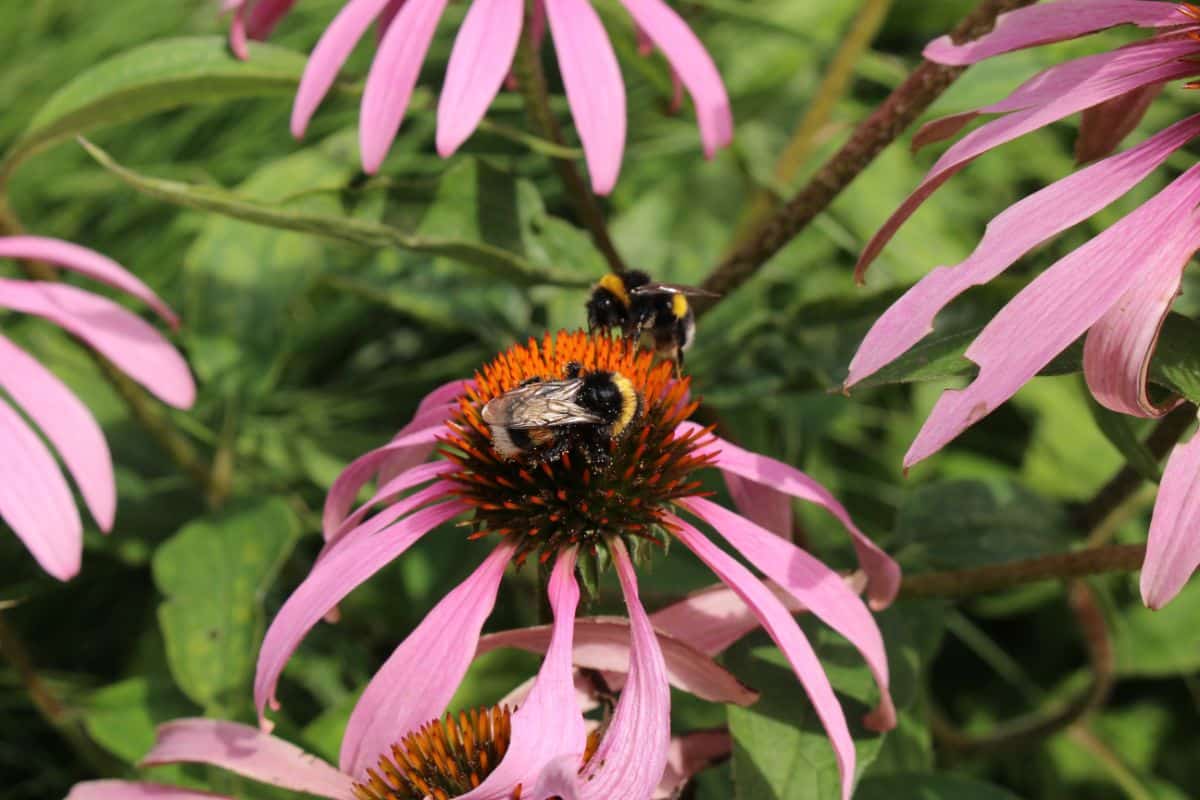
Coneflower is most impressive when planted in a large swatch. The bigger, the better, not only for the gorgeous display but also for attracting pollinators in the summer and seed-foraging birds in the fall. Goldfinches love them.
Plant them with some black-eyed Susans (Rudbeckia spp.) and lavender (Lavendula spp.) to provide contrasting color and a pollinator smorgasbord.
A coneflower by any other name…
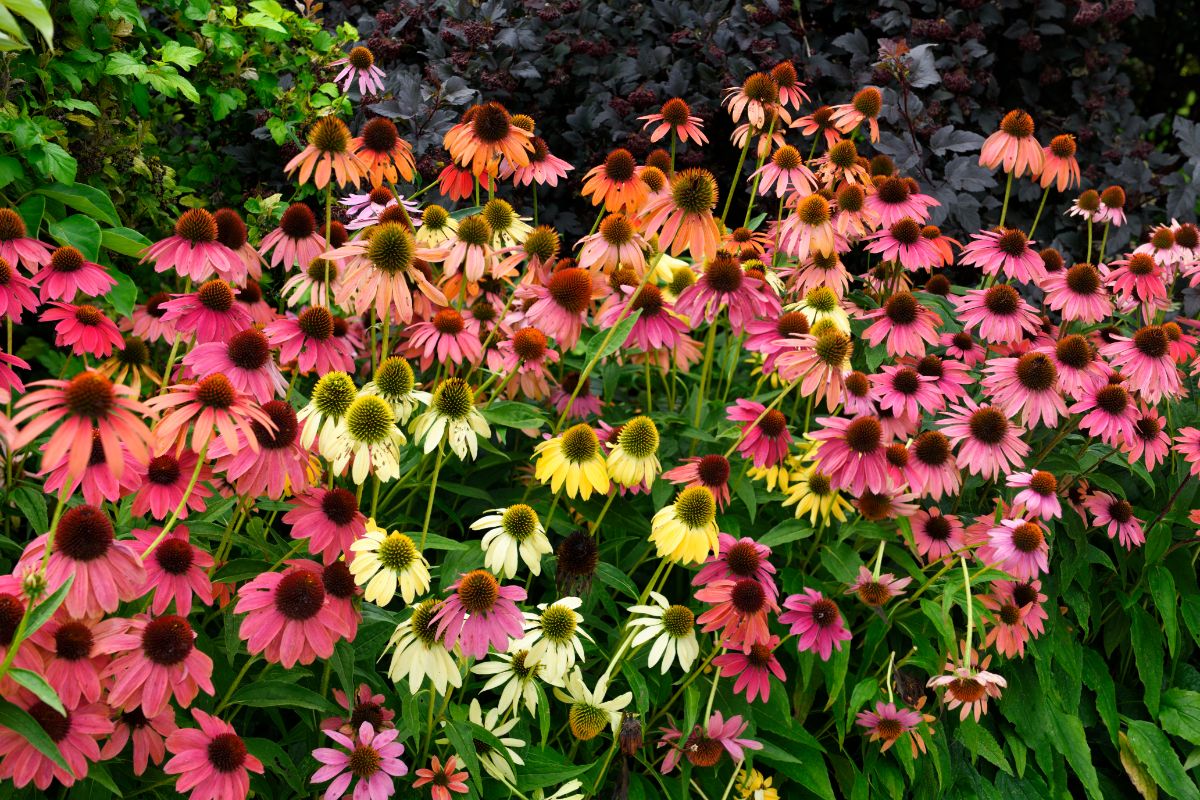
Coneflowers, Echinacea, purple coneflowers, ‘Double scoop cranberry’ echinacea. It all gets jumbled together. Here’s the scoop.
Coneflowers all belong to the genus Echinacea, which has ten different species of flowering plants. However, when we hear Echinacea, we usually think of the commonly named purple coneflower (E. purpurea).
Purple coneflowers come in so many cultivars and hybrids that their name is commonly shortened to just ‘coneflower’ or ‘echinacea’ with a cultivar name like ‘Cheyenne Spirit’ tacked on.
New selections are available every year in almost any color, including red, orange, yellow, green, and white. Some hybrids are mixes that make a waterfall of color.
Many cultivars of Echinacea are sterile hybrids, and for others, their color won’t come back true from seed. Learning to propagate by root cuttings or division is necessary to get more of those plants. Propagation by division also helps keep your clump of E. purpurea or its hybrid healthy and vigorous with new growth.
Coneflowers will not spread from rhizomes but will sometimes self-seed. Your best bet if you want to expand your purple coneflower patch or try something new is to learn to propagate it.
3 Ways to Propagate Echinacea
Purple coneflower and other Echinacea spp. are most commonly propagated in the home garden by root division. They are also readily grown from seed. Those who enjoy a gardening challenge may like to try propagation using root cuttings.
Purple coneflower grown from seed may not flower during the first year–although some do. Plants that are grown from root cuttings frequently will bloom during year one.
Echinacea you planted from division should be ready to put on a good show that first summer. All will be ready to amaze you in their second growing season.
Whatever your method, adding more of these long-blooming garden rock stars to your property is well worth the effort. Super easy to grow; all it needs is full sunlight and some well-drained soil.
Curb appeal has never been so easy.
How To Propagate Coneflowers with Root Cuttings
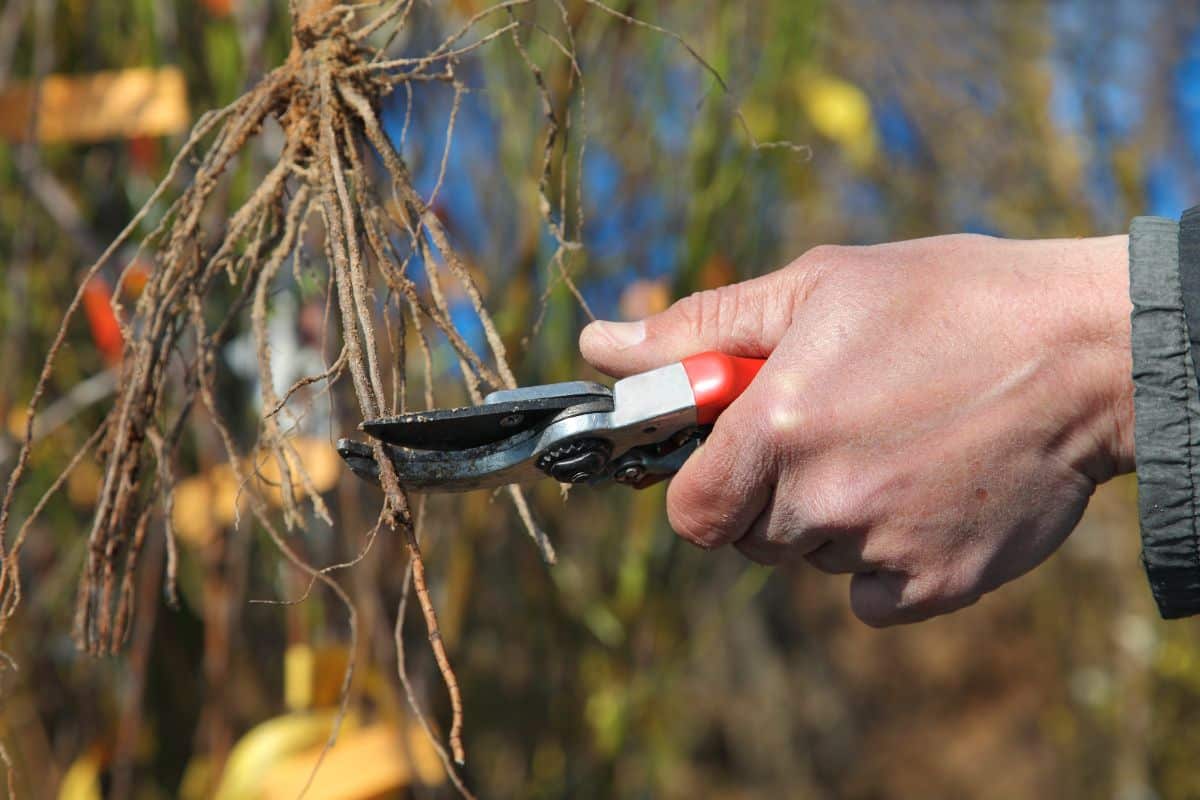
Follow these steps:
- Gently move the soil around the plant’s base to see the roots. Using a hose to wash some of the soil away may help.
- Use pruning shears to trim off pieces of root that are at least pencil-thick. Cut them into about 3-inch long pieces.
- Tuck your original plant back into its home.
- Plant each root cutting in a 4-inch pot prefilled with compost and coir or perlite. A mix of damp sand, compost, and perlite will also work. If you already have a favorite blend for rooting other cuttings, that will be perfect.
- Cover with about a half-inch of your potting medium and moisten the soil. Place the pots in a warm spot. Label them, so you don’t forget what they are.
- It can take six weeks before new shoots pop through the surface. Once they do, continue to grow your new coneflowers until they are big enough to plant out. You may decide to upgrade them to a 6-inch pot and grow them larger if the season is not suitable for planting outside.
Tip: Don’t forget to harden off your little coneflowers before exposing them to the elements.
How To Grow Echinacea From Seeds
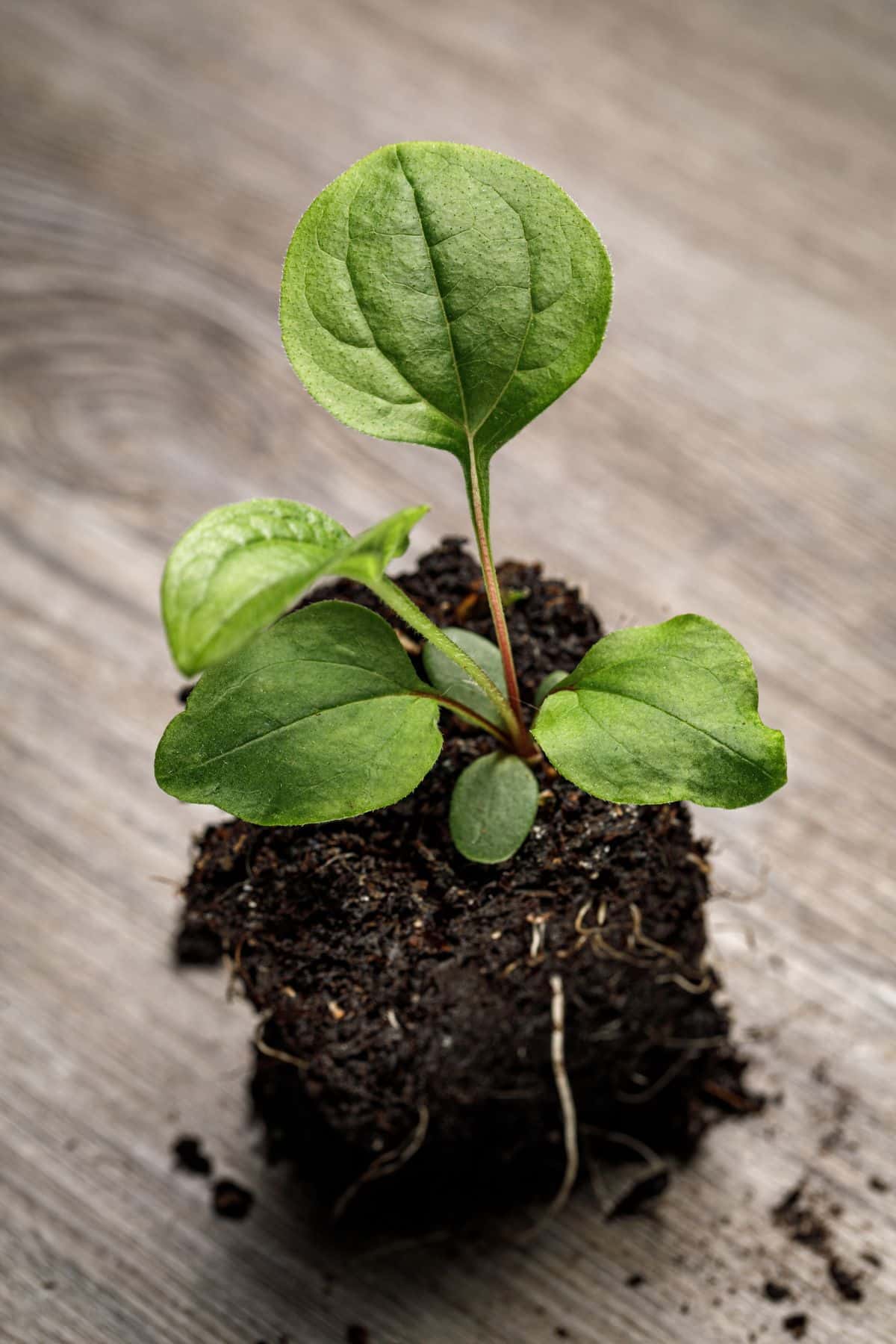
Echinacea is easy to grow from seed, and many cultivars are available from seed companies. If you have a natural variety of coneflowers already in your garden, you can try saving seeds from them as well.
To get started:
- Prepare your seed trays. Use any seed starting mix as long as it is well-drained. If in doubt, add some perlite.
- Sow one or two seeds per cell. Use a blunt pencil to make a slight impression on the surface, which makes it easier to see if you dropped a tiny seed in there or not.
- Echinacea seeds need light to germinate, so don’t bury them. Just a light covering is perfect.
- Mist the surface, cover with a humidity dome or plastic wrap, and place in a bright, warm location.
Keep the seedlings moist but not sopping wet. In about 8 weeks, they should be ready to pot up into larger pots for growing out.
How to Propagate Purple Coneflower Plants by Division
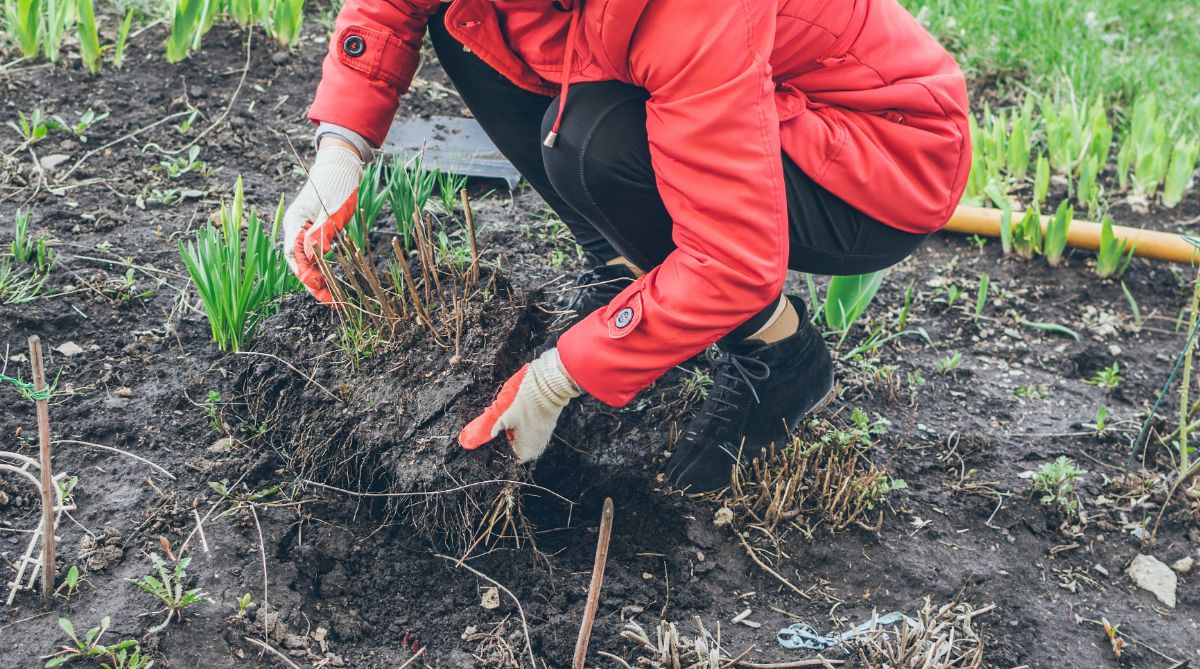
This is the easiest and most common way to multiply your coneflower plants. Echinacea purpurea has an extensive, fibrous root system that can easily be dug up and divided and, in fact, should be divided every few years to keep it from becoming root-bound and declining.
If your neighbor or someone in your garden club has a spectacular bed of coneflowers, take them a treat and see if you can get a root ball.
To get started:
- Gently dig around the base of the plant and loosen the root system. Try to keep it as one intact ball. Get as deep as your spade will reach.
- Carefully remove the root ball from the hole.
- Using a soil knife, large old kitchen knife, your garden spade, or a machete, cut the root ball in half, leaving good numbers of sprouts on both pieces. If your root ball is large, you may be able to cut it into thirds.
- Transplant these new plant-root pieces to their new home in the garden, planting at the same depth as before.
- Give your new coneflowers plenty of attention during the first few months. They were drought-tolerant before being dug up when they had a fully developed root system. However, they will need some help now until they are established.
Tips For Growing Echinacea
Soil, Sunlight, and Fertilizer Needs of Echinacea
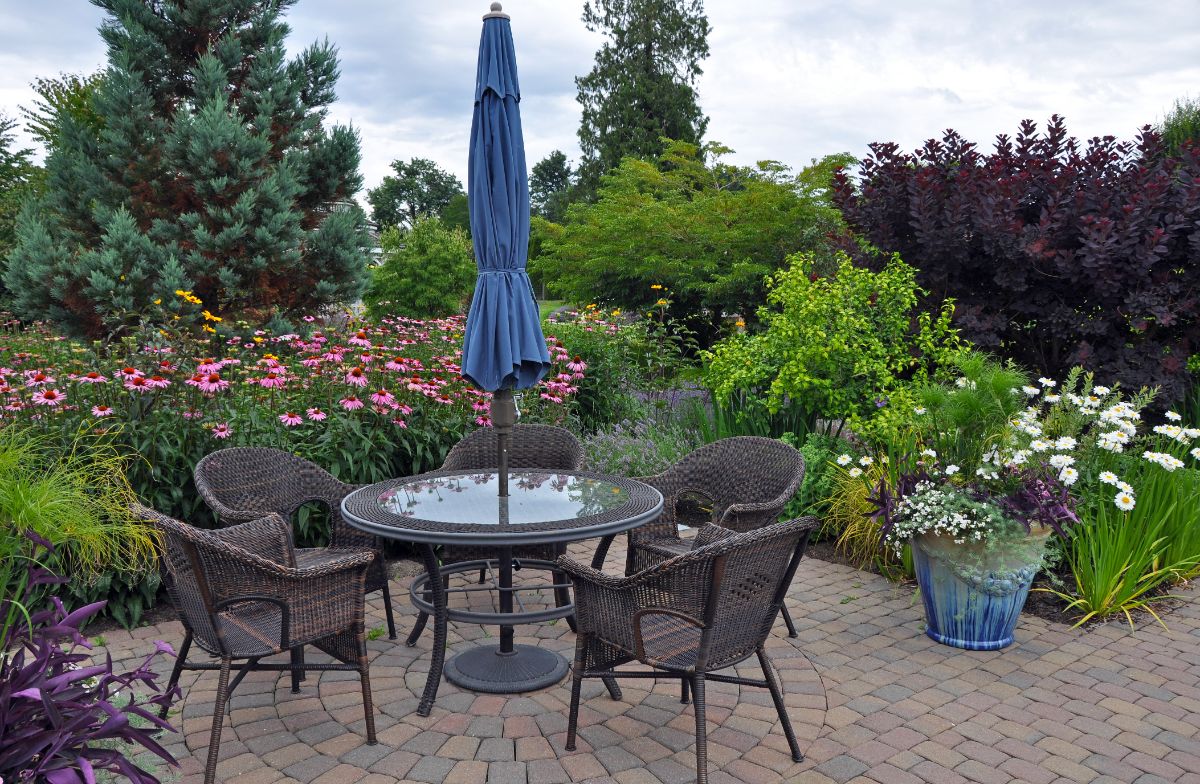
- Coneflowers need good drainage. They will tolerate many poor conditions but will not handle having wet feet. Remember, they are native prairie plants.
- Sandy loam is an ideal soil for Echinacea, but they will grow in most soils that are not pure playbox sand. Purple coneflower can even be grown in clay soils, as long as they are not waterlogged.
- Fertilizing needs can be satisfied with a top-dressing of compost in the spring.
- Echinacea likes a full, direct 6-8 hours or more per day of bright sunlight. They will grow in as little as 3-4 hours of sun but will not be as vigorous and will take longer to become a fully mature clump.
Growing Echinacea in Containers
Coneflowers grow well in containers, so those with limited space can also enjoy these native perennials. Their long bloom time makes them a great addition to a patio, balcony, or deck.
Avoid These Common Mistakes When Growing Coneflowers In Containers.
- Shallow pots: remember that many types of Echinacea form a tap root, even E. purpurea makes an extensive root system. Small planters don’t provide enough room.
Find a deep pot, pretty much the deepest one you can. Ensure it has good drainage and place it in a bright, sunny location.
- Forgetting to water: we know that coneflowers are drought tolerant, but that doesn’t mean they should never get a drink.
Remember, your coneflower in a planter on the deck cannot send its roots out nearly as far and wide as the coneflower in your garden. On the prairie, their roots can reach five feet deep.
Give it a long drink whenever the soil feels dry a couple of inches down into the planter.
Like most perennial plants, your new coneflowers will take three years to reach maturity and become that lush, expansive planting.
Keep propagating them, add a new variety or two, and in a few seasons, your perennial bed will be the talk of the neighborhood, the pollinator neighborhood, that is.


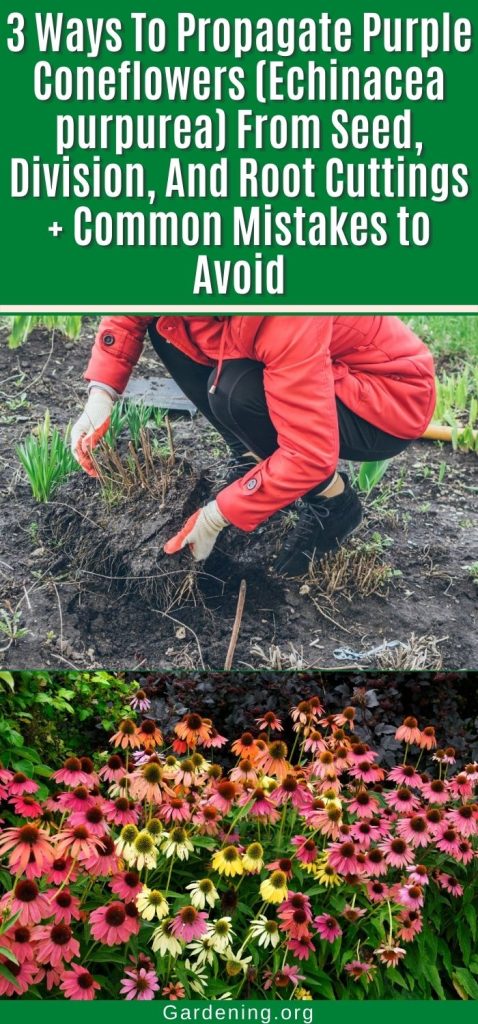

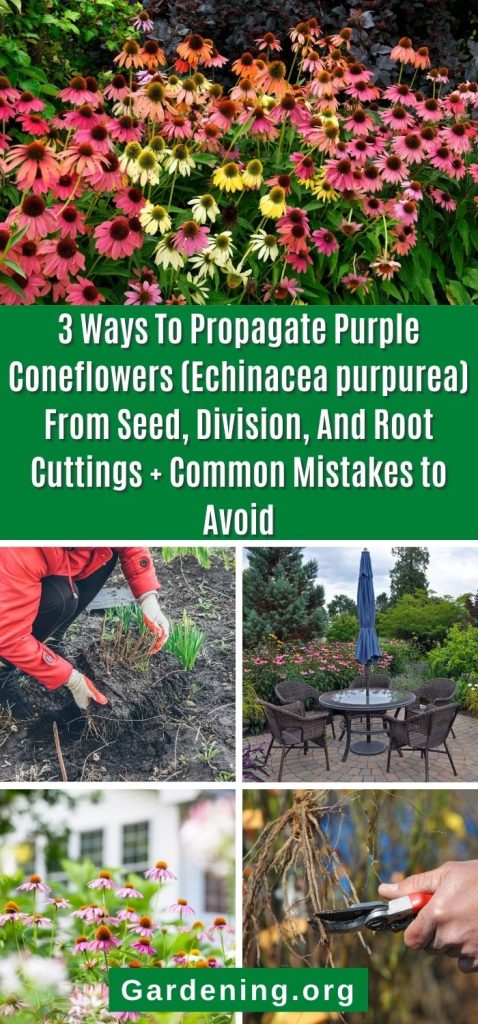


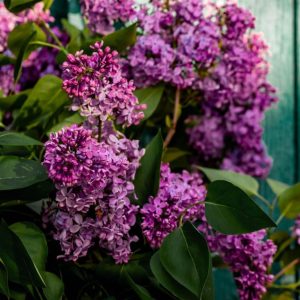

Jennifer
I am successfully growing purple coneflower in a indoor hydroponics system!! The hardest part is moving these plants to soil..once the plants are to tall to keep in my system, I put them in a soil-less medium..and hope for the best!
Mary Ward
I know for water-rooted elders it's often advised to do a transition where you add soil to the water and create a kind of slurry. Something in between the compaction of soil and the freeflow of water life. Perhaps it would help to put them into a container of water and add soil to make a slurry?
AiG
What happens if you leave a newly bloomed flower and bud on the stem? I know about energy to the roots being diverted but I worry about the open end at the top made by a cut. My spare stem was detached when transplanting from a 6” pot. I did a 45degree angle cut, rolled it in rooting hormone and placed the whole thing back in the pit with potting soil and some sand.
Lin Brvk
The petals of my coneflowers are routinely eaten. I have crumpled eggshells on the ground to stop bugs from getting to the petals but it doesn't stop the damage to the leaves
What next?
Mary Ward
If you think it is slugs, try beer traps on the ground instead. It could also be beetles or other things. It's tough to deal with on petals without killing beneficial insects like bees. I'd be hesitant to use diatomaceous earth because it can kill bees and other beneficial insects, and they will be landing on petals to get pollen. Neem oil might help if sprayed when bees are not out, but might be a risk on the pollen (sources are kind of on the fence on that one). I would probably use Spinosad (Captain Jack's Dead Bug Brew or a similar Spinosad product). Just time your application for a time of day when bees and beneficial insects are not active.